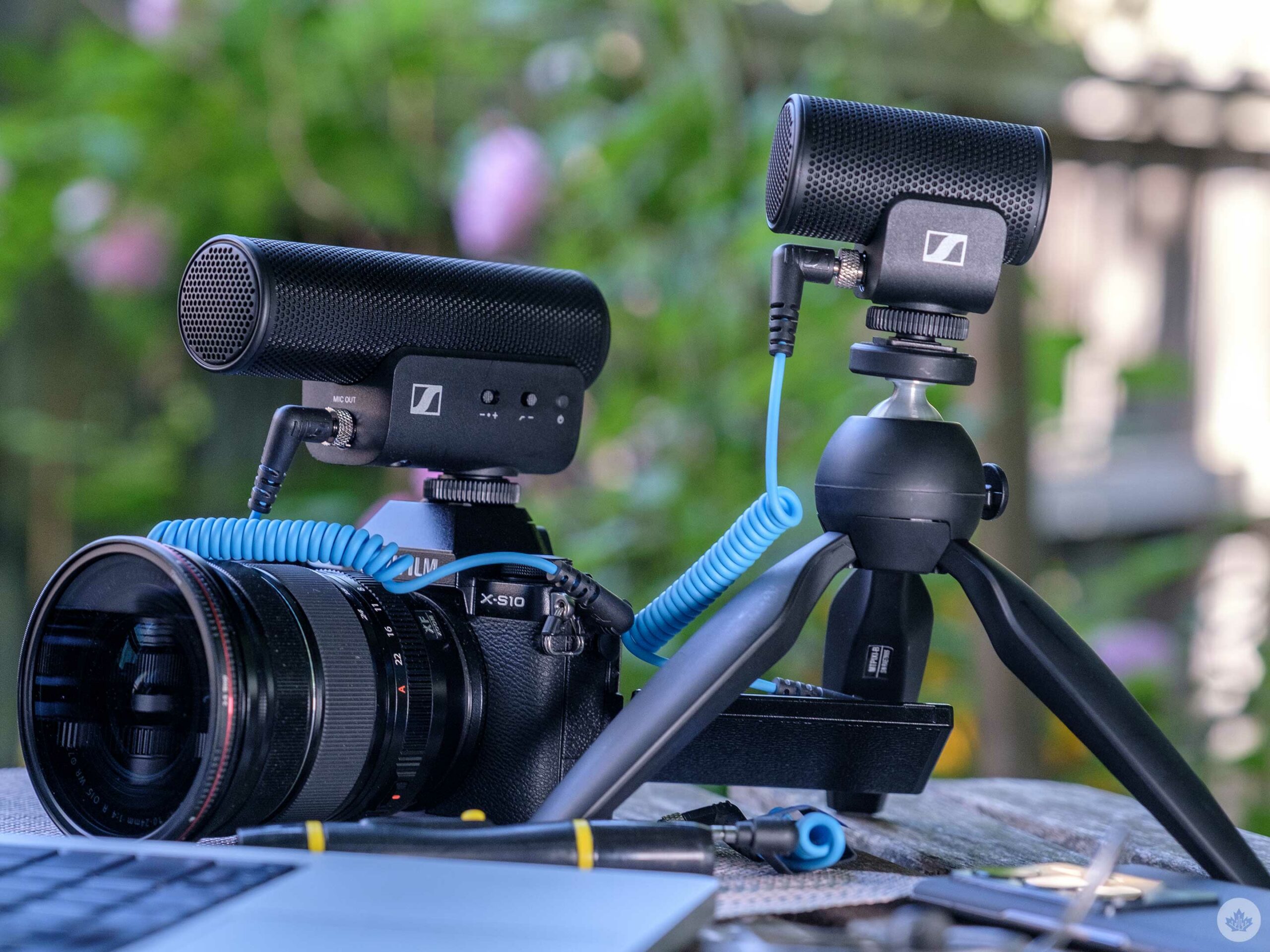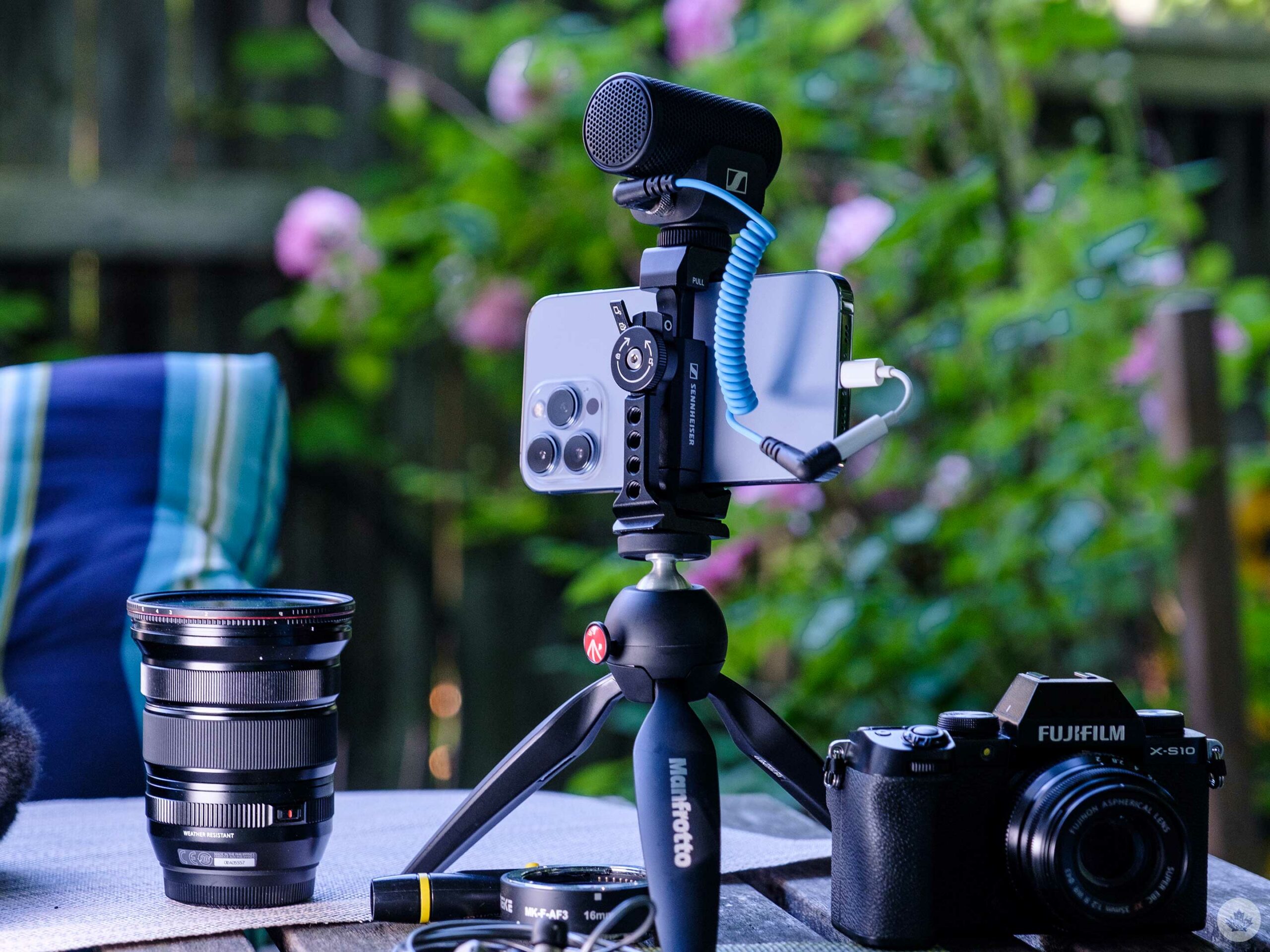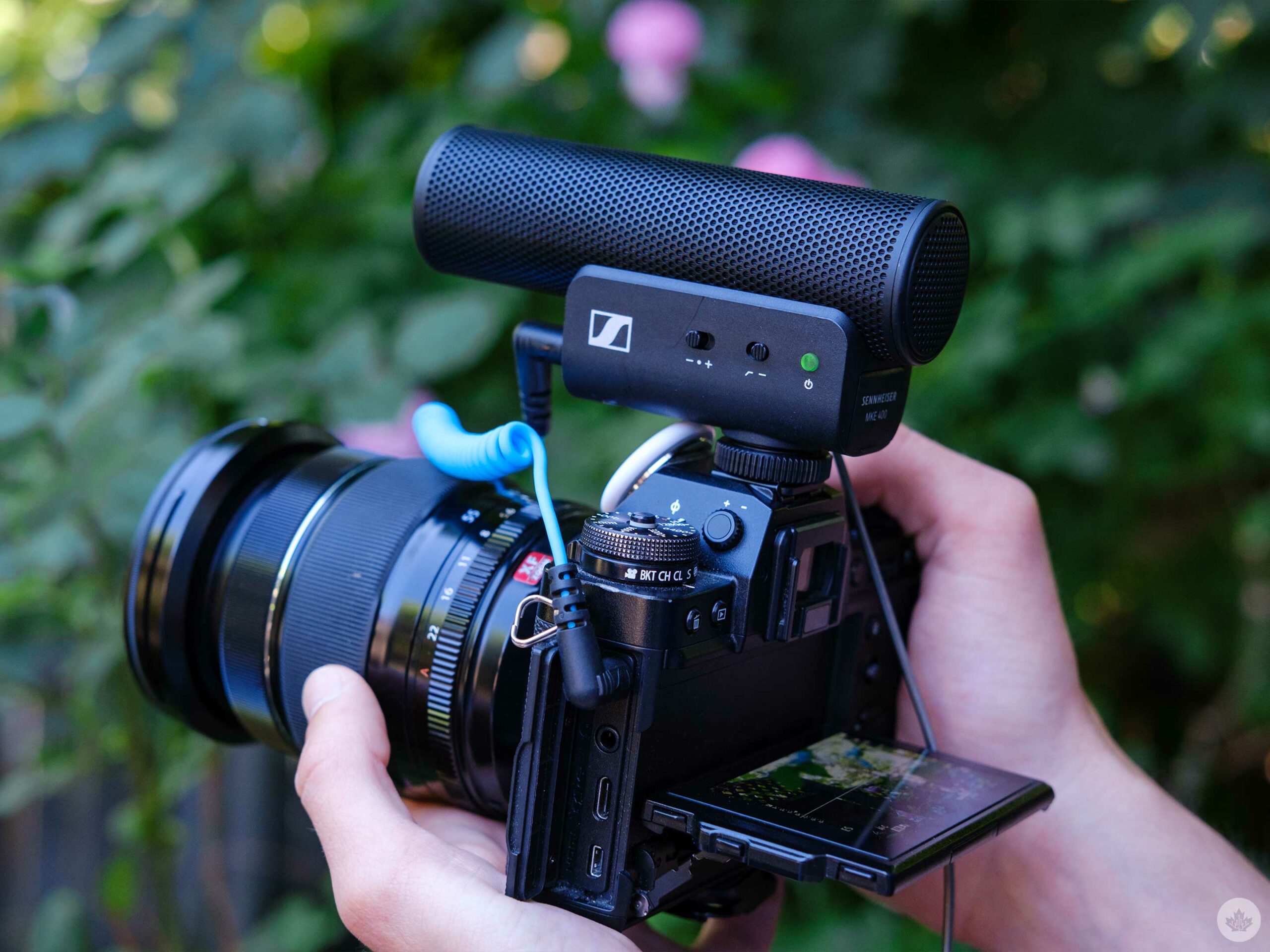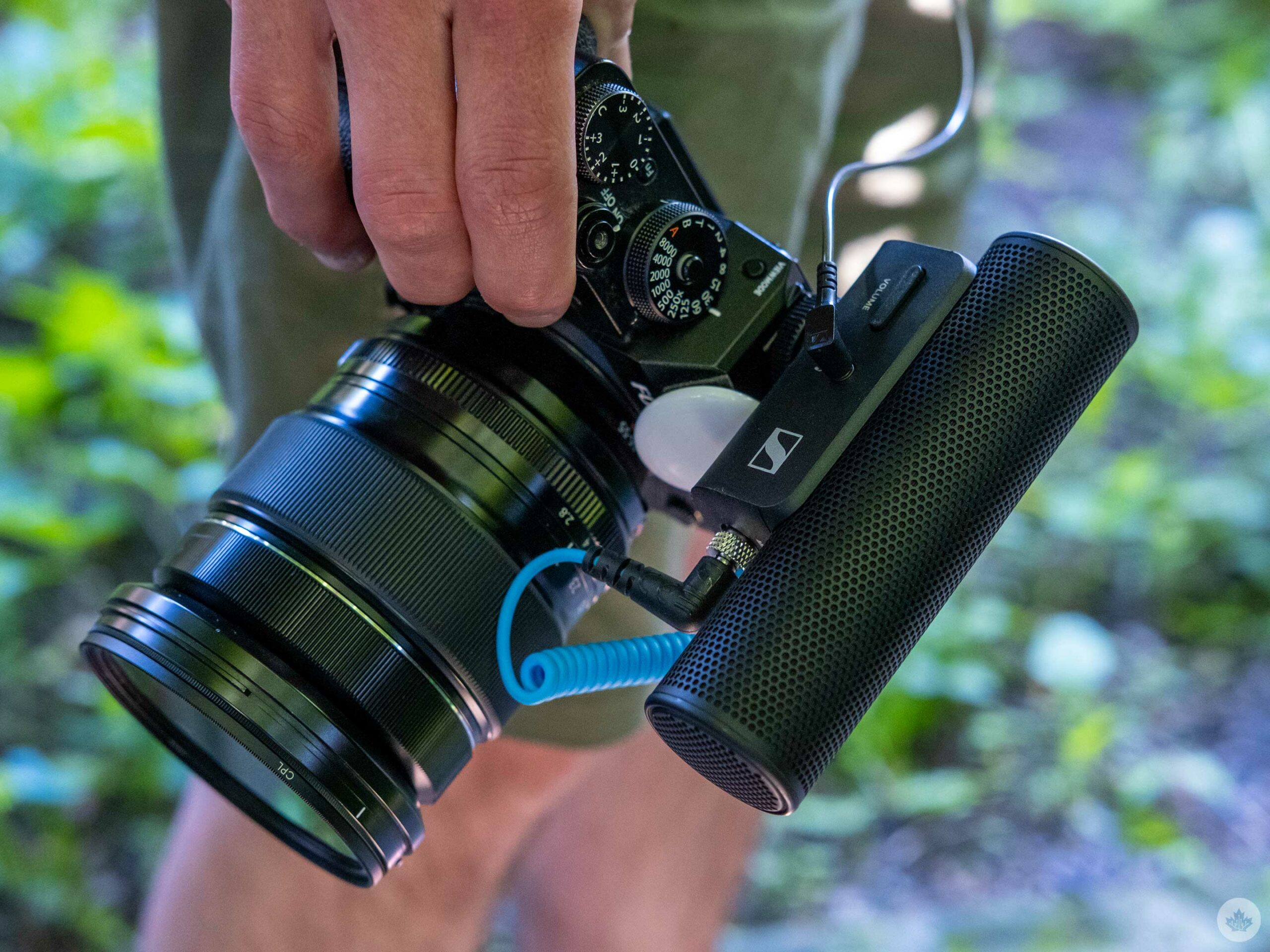
Knowing when to upgrade your video audio is easy, but selecting which option is the best for you can be an entirely different hurdle.
A simple way to get versatile audio that will function directionally like the built-in mic on your camera is to get a shotgun mic. Sennheiser has two new options aimed at just that: the MKE 400 and the MKE 200.
Both mics sound very similar, but there are key differences that set them apart.
Why choose a shotgun microphone?

The MKE 400 is the larger of the two microphones.
When you’re starting out as a creator, there are two types of microphones that make the most sense to use. On-camera shotgun mics that point forwards and capture audio from everything in front of them, or lavalier/wireless systems like the DJI Mic (or plugging a simple lav mic into an external recorder and syncing audio in post).
If you’ve been using the microphone that’s built into your camera, you’ll likely be more comfortable stepping up to a shotgun mic. A good shotgun mic picks up audio that it’s pointed at and still captures a bit of background noise, offering a great all-in-one solution.
The Sennheiser options even take this pickup pattern a step further and utilize a ‘Super cardioid pattern that points forwards with a sharp angle to help reduce side noises, but it does pick up voices behind the camera too. This can be useful for some setups, but not all, so it’s good to be aware of.
A surprisingly awesome entry-level contender

Each mic comes with two Aux cables. One to use with a camera and another for phones.
The first of the two is the very deceiving MKE 200. At $129 it’s a great starting point for anyone looking to upgrade their audio, and its small form factor makes it exceptionally easy to travel with and use on a variety of cameras.
Like most modern on-camera shotgun mics, the MKE 200 has a hot shoe clip and a 1/4-inch tripod screw hole, so it can be mounted on a camera or with numerous other accessories. This mic is also powered by your camera so it turns on and off with it and you don’t need to worry about keeping spare AAA batteries around.
The small size is the greatest strength of the MKE 200. It’s so tiny that it’s easy to jam in a pocket and take anywhere. Plus, since it’s just plug-and-play, there are minimal settings to fiddle with before you can start rolling. If you’re just starting out with a microphone, the MKE 200’s simplicity makes it a very appealing option.

If you get either mic with the mobile kit it comes with this tripod and phone mount.
However, there are problems that come with that small size, since you can’t adjust or monitor audio directly from the mic. A headphone jack would have gone a long way towards making this mic more versatile. Especially given its small size, it will likely be used on smaller cameras or phones that lack dedicated headphone jacks.
Sennheiser has also incorporated the shock mount and the wind filter into the design of the microphone so you don’t need to carry around an extra windsock, which also helps keeps the size of the mic down. I found this worked well, but the smaller size of the microphone means it casts a wider sound net than the MKE 400 and can capture more background noise if you’re out and about. In the studio, it sounds very similar to its older sibling, but on the street, it’s not as direct.
The company also sells the microphone with a ‘Mobile Kit’ that includes a nice phone clamp and a small Manfrotto tripod. For the Extra $30 I think this is definitely worth it if you don’t already have a decent phone mount or mini tripod.
Taking things up a notch

The glowing green power button turns off when the mic is off, making it easy to see if it’s on.
If you’re a videographer on the go and you know that your audio situations are going to be unpredictable, the $259 MKE 400 is a better option.
In quiet rooms, it sounds very similar to the MKE 200 (this is a good thing) but in more dynamic environments, the MKE 400 steals the show with its extra controls and a tighter cone of sound. Being able to toss on a low-cut filter or adjust gain on the fly is also useful. Plus the added headphone jack means you can always monitor your audio.

Like the MKE 200, the 400 also has its shock mount and wind filter built-in, so while it might be a lot longer than its sibling, it’s not that much larger in practical terms. That being said, the MKE 400 does need two AAA batteries to run. However, the battery life is upwards of 100 hours according to Sennhessier so the added power the batteries can give to the audio quality is likely worth it here. The company has also smartly implemented a system that makes this mic turn on and off with your camera so it’s very rare that you’ll accidentally leave it on in a bag or overnight.
In terms of a highly versatile travel microphone, the MKE 400 is difficult to beat. The integrated shock mount and wind filter make it feel much more compact and solid compared to something like the Deity D3-Pro or a Rode VideoMic. You can also toss on an included wind sock, but I’ve found it only necessary in high-wind environments.
Listen for yourself!
MobileSyrup may earn a commission from purchases made via our links, which helps fund the journalism we provide free on our website. These links do not influence our editorial content. Support us here.


